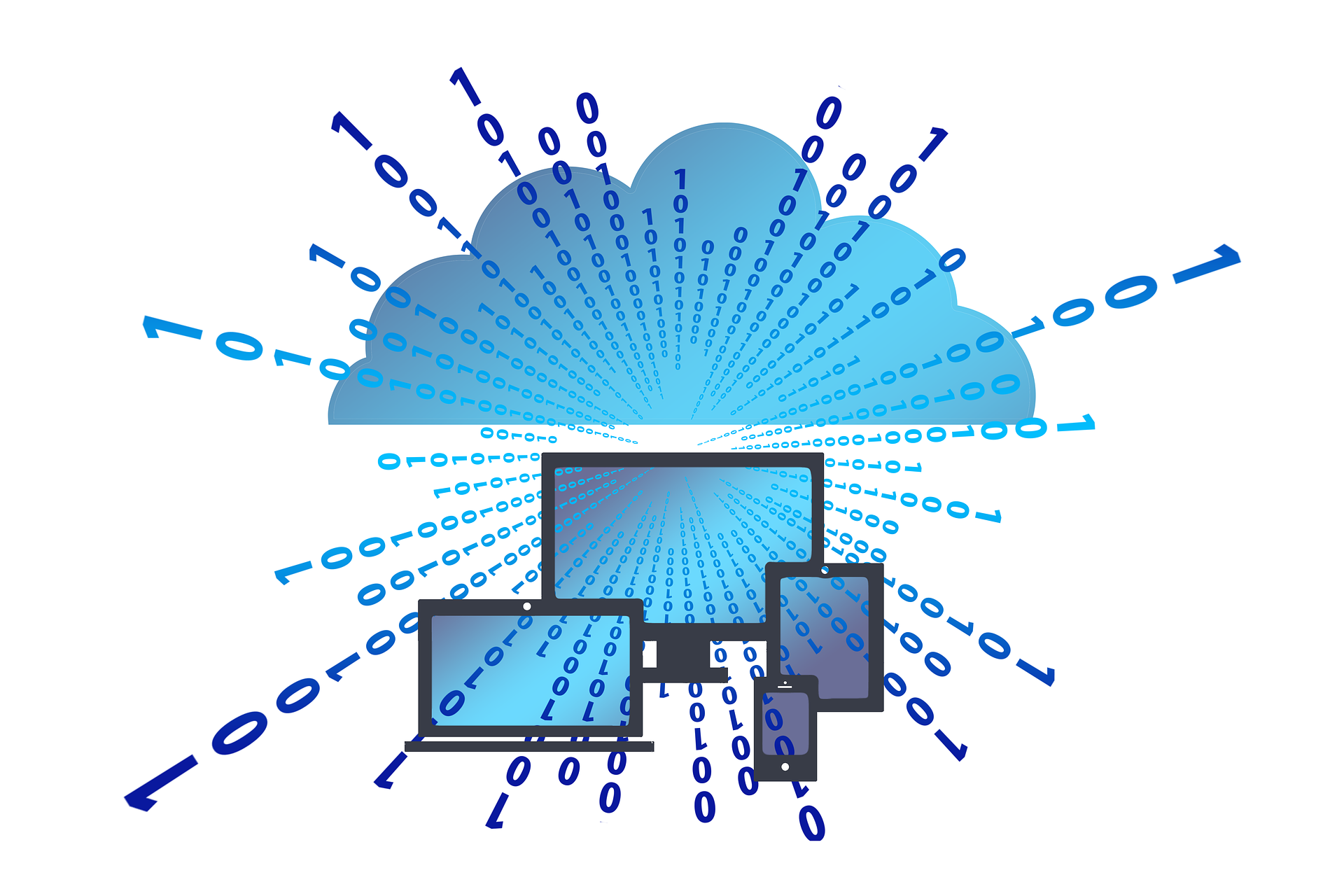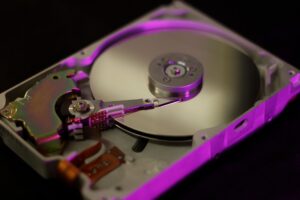Note : This page has been translated into English from French by a machine translation tool
You would like to be able to access a set of important and regularly needed data, but the storage on your mobile devices is too limited for that. Storage via a cloud solution, such as Microsoft OneDrive, for example, is a possibility that we have already discussed. In this case, you send your data and other files to a remote server that will store them for you. These will then be accessible from anywhere as long as you have access to your storage space and a sufficient internet connection to load this data within a reasonable period of time. Except that you may think that you would prefer to store your most sensitive personal data or rather confidential business documents on a storage space under your control. That’s where the NAS comes in…
What is the NAS ?
As often we are dealing here with an English acronym. Indeed, NAS means Network Attached Storage which can be translated as “serveur de stockage en réseau” in French. A NAS is a box that can resemble a central computer unit of more or less size and equipped with a hardware configuration adapted to allow you to connect it to the network and perform independently the tasks necessary to ensure the storage of your data and their accessibility. A NAS is therefore a personal cloud that serves as a remote storage while ensuring that you can host the data yourself since the server is located in your home or office and only you and those to whom you have given the rights will have access to it.
You will have understood it, we can compare these devices to computers and as such they are, in addition to their storage space, equipped with an operating system (see our article The Microsoft Windows operating system to learn more), generally derived from Linux, but also with a microprocessor and a bit of RAM (see our article Technical characteristics of computers and tablets if you want to know more about these components).
The administration interfaces that equip some of these storage servers can of course allow you to set up your own cloud but can sometimes have many additional features. They can also allow you to configure a media center to play your audio or video files from your storage space or install an antivirus to protect your machine and the data it contains. If you plan to offer maximum security to the data you host you can also set up a backup system on another media, a hard drive or another NAS for example. If you wish to share multimedia files or documents with your family or some of your collaborators, you will also be able to set up specific links in order to allow access to the chosen resources to whomever you want and for as long as you want.
But we can go even further… You can even set up a surveillance center since there are modules allowing you to connect IP cameras to your server and thus have access to real-time images. Finally, we can also mention the possibility that you can create shared folders for which you can configure read rights as needed or use it to make a printer available to all employees of a small structure. Finally, among other possible functionalities, we can mention the setting up of a local server to host a CMS such as Drupal, the setting up of an iTunes or Plex server, a virtual machine hosting server (see our article Virtual Desktop Infrastructure (VDI) to learn more about virtual machines) or a telephony server but also the management of downloads, TV channel recording or data synchronization with an external cloud such as Microsoft OneDrive. In short, as you will have understood, we are not just talking about a simple storage solution but a complete solution that can replace the implementation of an internal server infrastructure for small businesses and be an interesting alternative to the external cloud for more family uses…
But let’s go back to the primary function of the NAS…
While the features that some NAS can offer can be numerous and extremely interesting, it’s still necessary to take a closer look at the main feature that you could use it for, namely network storage. The first question you might ask yourself is, “How much storage space will I get with my NAS ?”. Concretely, you can choose by yourself according to several criteria that we will discuss immediately…
Number of bays
A NAS consists of one or more slots to accommodate one or more hard drives of the same format as the one you can find in your computer. The number of slots, called bays, therefore corresponds to the number of hard disks that your NAS will be able to accommodate. So here we have two obvious levers to increase the storage capacity of your system, either equip you with higher capacity hard disks or equip you with a NAS with a larger number of bays. When you purchase this type of equipment, you can choose to go for a NAS that comes with the hard drives, but you can also purchase them separately, giving you more customization of your storage capacity.
As you can imagine, NAS as well as hard disks you will find many models and for all capacities. However, in order to give you an order of magnitude and start answering the question asked above, you will find hard drives with capacities between 4 and 8 Terabytes (between 4000 and 8000 GB) for relatively reasonable prices. On the other hand, NAS’s are also found in all sizes and with great disparities in hardware configurations. The most powerful are rackmount (see our article The server infrastructure for more information) and can be equipped with several dozen bays. Naturally unsuitable for a small business or for family use, they are intended for large structures that need first-rate storage capacity and performance. For professionals who need a limited level of resources or to store and share files with your entire family, you can find enclosures with two to four bays at a relatively low cost. From six bays upwards, the hardware starts to be more expensive and often not adequate for most uses. With a quick calculation, you can get a storage space of 32 Terabytes by choosing the largest configuration from the above mentioned equipment. But no, in fact, it’s not that simple…
RAID architecture
Indeed, consider that your useful storage space will most of the time be less than the total storage space calculated by adding the capacities of each of the disks in your set. The reason for this is the way this space is used in order to guarantee either a high level of performance mainly characterized by a high transfer speed of your data or an important level of security allowing you to guarantee the integrity of this data even in the event of failure of one or more hard disks. This set of techniques for managing your storage space is called RAID architecture, an acronym corresponding to a redundant grouping of disks. Thus, there are a significant number of them, allowing you to adapt the use of these disks to your needs. Regardless of your choice, you will only see one logical storage volume on the other devices in your network, regardless of the number of physical hard drives that make up your NAS. Finally, most of the time you will have the choice between these different RAID architectures for the same NAS in its administration interface. The different possibilities will be dictated by the chosen NAS model and the number of bays that compose it. We invite you to read our article RAID architecture now to get a precise vision of the solutions available to you in order to adapt to your needs the way you will use your storage space.
You have seen that there are many solutions to store your data and ensure that you can access it from anywhere as soon as an internet connection is available. You will have understood that as often it is your needs and sometimes also your budget that will dictate your choice. Let’s specify that the configuration we have taken as an example in this article is a set that you can get for about 1000 to 1200 €. You can consider that this starts to make a significant sum for a configuration initially presented as affordable. And it is… But, while it can sometimes be useful for a small business, such storage space will probably not be needed for family use and you can find a configuration consisting of two hard disks for half the price or even less and that will suit you perfectly. Here we will present you with some additional basic rules to help you choose your NAS…
- Prefer hard disks with the same capacity and transfer speeds (or even identical hard disks) because in RAID 1 for example, the transfer speed of the logical volume will be that of the slowest hard disk and the storage space that of the hard disk with the lowest capacity
- Do not choose hard drives with very high read speeds if your main use is limited to remote content viewing and the available bandwidth on your internet line is very low
- On the other hand, choose good quality hard disks (there are models designed for this type of use) because your NAS will have to work permanently and therefore use hard disks much more than a computer for example that you turn off or that goes into sleep mode regularly
As you can see, this last point about keeping your NAS up and running at all times is essential if you want to be able to access your data whenever you want from anywhere. Note also in some cases the presence of applications dedicated to mobile devices that allow easy access from your smartphone or tablet to the data stored on your NAS.
Finally, it should be noted that a NAS is not a backup and that even with a configuration composed of four disks in RAID 1, you will lose your data if you make a mistake and accidentally delete files or folders since the operations are synchronized on all disks. The same will happen if your storage space is corrupted by a computer virus. Therefore, if you want to be able to protect your most important files, you will need to store copies of them on another medium as well. Remember to use the proposed backup tools if you choose a NAS that has them.









I don’t think the title of your article matches the content lol. Just kidding, mainly because I had some doubts after reading the article.